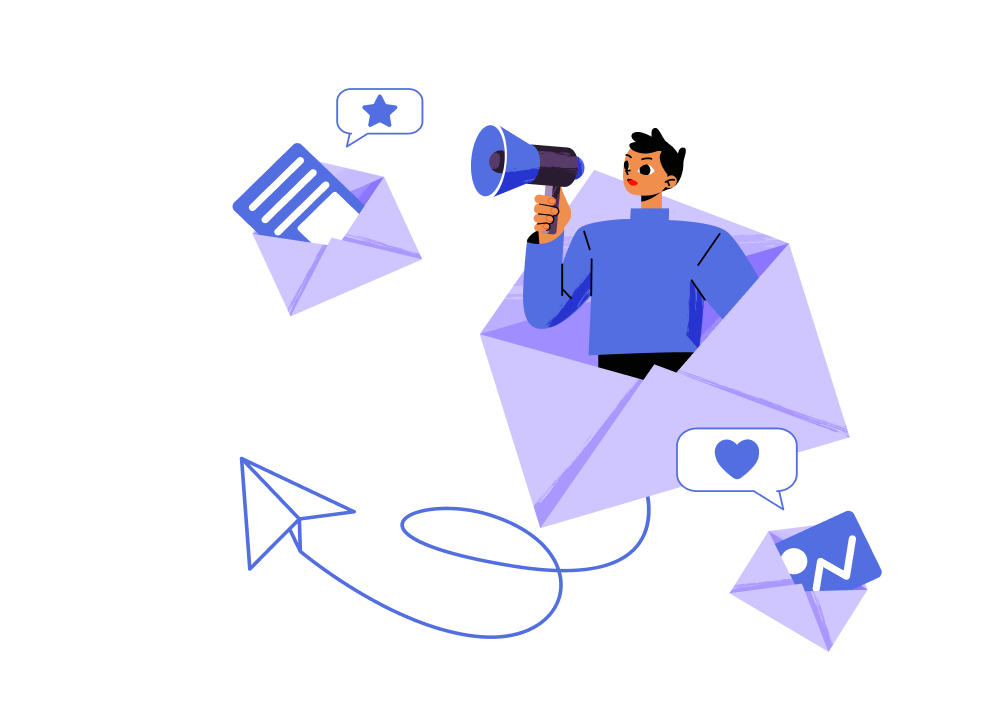HR forecasting drives better workforce planning by enabling proactive talent management, improving cost efficiency, enhancing strategic alignment, mitigating risks, and increasing agility to respond to changes.
Sick of last-minute hiring chaos? HR forecasting is the game-changer you need.
It lets you predict staffing needs before they become urgent, so you’re always one step ahead.
In this blog, we’ll explore how smart forecasting can give your recruitment strategy the edge it needs to support your business goals seamlessly.
What is workforce planning?

HR forecasting is all about having the right people in the right roles when you need them.
It’s not just guesswork – it’s a data-driven process that looks at your company’s goals, resources, and trends to predict future staffing needs.
But let’s be real, predicting future talent needs and aligning workforce plans with business goals can be tricky.
That’s where tools like accounting consolidation software come in handy. By combining HR forecasting with such powerful tech, you can make sure your workforce strategy supports your business growth seamlessly.
Also read: Open-door policy: The key to a happier, more productive workplace
5 key components of HR forecasting and workforce planning
1. Demand forecasting
Demand forecasting estimates how many employees and what types of skills the organization will need in the future.
It’s based on business plans, market conditions, and factors like technological changes or industry trends.
When it comes to workforce planning, the focus is on understanding your company’s strategic goals, market trends, and operational needs.
This helps forecast the demand for different types of employees.
2. Supply forecasting
This involves estimating the availability of potential employees, both within the organization and in the external labor market.
It includes analyzing current workforce skills, retirements, turnover rates, and external hiring conditions.
Assessing the availability of current employees for future roles allows organizations to consider promotions, transfers, and retirements.
They can then evaluate the external labor market to understand the availability of potential hires with the required skills.
3. Gap analysis
Comparing the demand forecast with the supply forecast helps identify gaps in staffing levels or skills, highlighting potential workforce shortages or surpluses.
Reviewing the current workforce compared to future needs helps workforces spot discrepancies in skills, numbers, or roles. Using a performance management tool can make this process more data-driven, helping HR teams analyze competencies, forecast talent needs, and plan targeted interventions.
Identifying staffing lags or surpluses is also a key part of the process.
4. Action planning
Based on the gap analysis, HR departments can create strategies to recruit, train, or redeploy employees to meet future needs.
This could involve hiring new employees, retraining existing staff, or using temporary or contract workers.
Businesses can also use this information to develop recruitment strategies, prepare for future leadership through succession planning, and create retention strategies to keep key talent and reduce turnover.
5. Monitoring and adjustment
Monitoring the ever-changing needs of the workforce is essential for any business.
Reviewing this information regularly and adjusting plans as business needs and external conditions fluctuate is key.
Internal changes or hiring trends might impact the status quo, so it’s important to prioritize workforce planning if you want to keep things running smoothly.
You might also like: What is talent mapping in recruitment? We’ve decoded it for you!
Top 5 ways HR forecasting drives better workforce planning

1. Proactive talent management
HR forecasting allows organizations to anticipate future talent needs based on business growth and goals.
Companies can proactively recruit, train, or redeploy employees by identifying potential skill gaps or workforce shortages.
This ensures that the right talent is available when needed, reducing the risk of understaffing critical roles.
2. Improved cost efficiency
Organizations can avoid the costs associated with overstaffing or understaffing.
Overstaffing leads to unnecessary payroll expenses, while understaffing can result in missed business opportunities and overworked employees.
HR forecasting helps balance recruitment costs with business demands, optimizing resource allocation.
3. Enhanced strategic alignment
HR forecasting ensures that workforce planning aligns with the organization’s strategic objectives.
By understanding future business needs, you can develop a workforce strategy that supports long-term goals, such as entering new markets, launching new products, or expanding operations.
This alignment helps you stay competitive in the field.
4. Risk mitigation
Effective HR forecasting helps identify potential risks, such as a high likelihood of employee turnover, impending retirements, or skills shortages in critical areas.
Anticipating these risks gives HR the ability to implement strategies to address them.
This can include succession planning, targeted recruitment, or upskilling initiatives to ensure business continuity and resilience.
5. Increased agility and responsiveness
Organizations using HR forecasting can respond more quickly to market fluctuations, technological advancements, or regulatory changes.
With a clear understanding of workforce needs, HR can make timely adjustments to staffing levels, roles, and skills, enabling the organization to remain agile and competitive in a dynamic marketplace.
Don’t miss out on these 5 best practices for successful HR forecasting
1. Integrate financial and workforce data
Leverage profitability analysis to align HR forecasting with financial performance.
Understand how workforce costs impact overall profitability and use this information to make informed decisions about staffing levels and investment in human capital.
If you’re wondering, “What is profitability analysis?” It’s the systematic examination of profitability markers that helps companies optimize their revenue streams to maximize profit.
You can use insights from profitability analysis to forecast staffing needs based on projected revenue and cost trends.
For example, if profitability is expected to decline, the recruitment team might plan to reduce the workforce or implement cost-saving measures.
2. Conduct regular scenario planning
Use scenario planning to assess different business conditions and how they might affect your workforce needs.
This involves creating multiple forecasts for potential future situations, like market growth or economic downturns.
By adjusting HR forecasts for each scenario, you’ll be better prepared for a variety of outcomes and able to make proactive staffing decisions.
3. Align HR forecasting with strategic goals
HR forecasting should be tightly connected to your company’s broader strategic objectives.
By doing so, you can better anticipate future talent needs that will drive the company’s overall success. Incorporating scalable demand planning and forecasting tools allows HR teams to adjust workforce strategies as business conditions change.
For example, using financial performance data helps align HR forecasts with major business plans like product launches or market expansions, ensuring workforce planning stays in sync with key initiatives.
4. Foster cross-departmental collaboration
Collaborate with other departments, such as finance, operations, and sales, to ensure that HR forecasting is aligned with broader organizational objectives and departmental needs.
Schedule meetings with key stakeholders from different departments to discuss upcoming projects, budget changes, and strategic plans.
For instance, if the sales team anticipates a major product launch, you might forecast the need for additional marketing and sales personnel. Aligning your plans with lead assignment rules Salesforce can help ensure that incoming leads are directed to the right team members, supporting both efficient staffing and sales execution.
5. Regularly review and adjust forecasts
It’s important to keep a close eye on your HR forecasts to make sure they stay accurate and relevant.
As business conditions, financial performance, or external factors shift, you’ll need to adjust your forecasts accordingly.
Using real-time data, you can easily update your workforce plans and respond quickly to changes in the business environment.
Don’t miss out: How to build a recruitment dashboard in 4 easy steps
Frequently asked questions
1. What are some common challenges in HR forecasting?
HR forecasting faces several challenges:
- Rapid market and technological changes: Shifts in market trends and new technologies can be hard to predict, making it difficult to plan for future workforce needs.
- Data accuracy: Forecasts rely on accurate, up-to-date data. Incomplete or outdated information can lead to inaccurate predictions.
- Aligning with business goals: Ensuring forecasts match evolving business strategies can be tricky, especially if objectives change frequently.
- Unpredictable external factors: Economic shifts, regulatory changes, or unexpected crises can disrupt even the best forecasts, forcing quick adjustments.
- Balancing talent supply and demand: Sudden talent shortages or surpluses can create gaps or redundancies, complicating workforce planning.
2. Can small businesses benefit from HR forecasting?
Absolutely. HR forecasting isn’t just for large companies. Small businesses can use it to plan for growth, avoid overstaffing, and ensure they have the right skills in place as they expand.
3. How does HR forecasting support employee retention?
HR forecasting helps you plan ahead by figuring out what skills your team will need down the road. One of the ways you can achieve this is by relying on visual skill mapping to gain a clearer understanding of each team member’s strengths and areas for development.
When you offer training and development opportunities based on those needs, it shows employees there’s room to grow, which keeps them engaged.
It also helps you spot areas where turnover could be a problem, giving you time to take action—like setting up mentorship programs or offering leadership training.
Blog summary
HR forecasting helps businesses predict staffing needs and align workforce plans with long-term goals. It includes five key components:
- Demand forecasting: Estimates future staffing needs based on business plans and trends.
- Supply forecasting: Assesses internal talent, turnover, and external hiring conditions.
- Gap analysis: Identifies discrepancies between demand and supply to uncover staffing shortages or surpluses.
- Action planning: Develops strategies to address gaps, like recruitment or training.
- Monitoring and adjustment: Regularly reviews and updates plans as business conditions change.
HR forecasting improves talent management, cost efficiency, strategic alignment, risk mitigation, and agility. It ensures businesses have the right people in place at the right time while reducing hiring costs and risks.
Best practices include integrating financial data, scenario planning, cross-departmental collaboration, and regular reviews.
Small businesses can benefit by planning for growth and avoiding overstaffing. HR forecasting also supports employee retention by identifying future skill needs and providing training opportunities.



